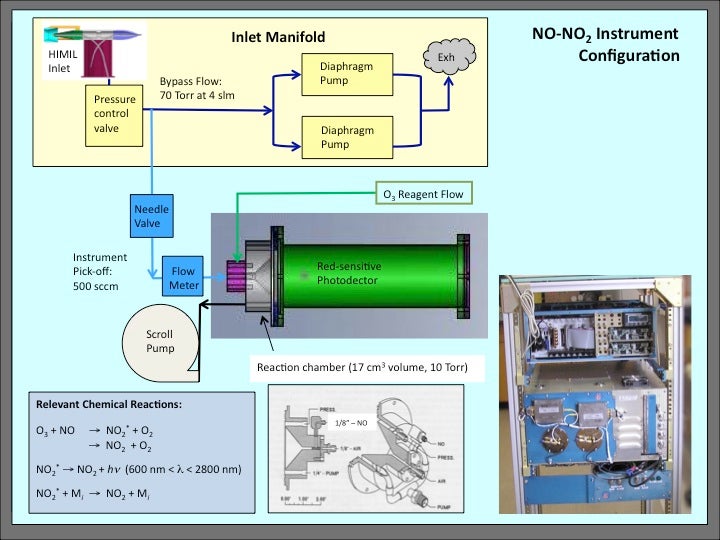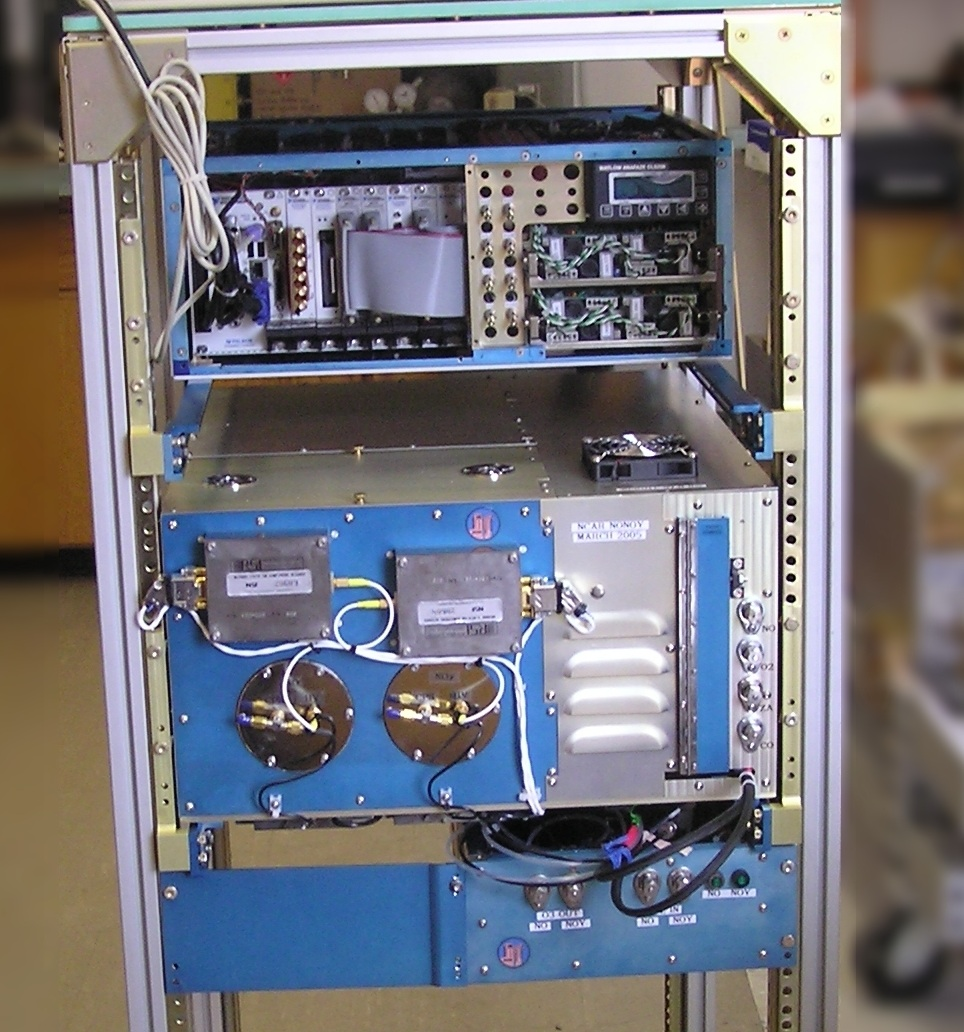2-channel chemiluminescence instrument (NO and NO2)
Schematic diagram and layout:
This is a 2-channel instrument based on the chemiluminescence detection of NO via reaction with O3 to form excited NO2, which is detected via photon counting. One sample channel is used to measure nitric oxide, NO, and the second measures nitrogen dioxide, NO2, by flowing ambient air through a glass cell illuminated by light-emitting diodes (LEDs) at 395 nm, for the conversion of NO2 to NO via photolysis. The instrument is similar to instruments previously built at NCAR [Ridley and Grahek, 1990; Ridley et al., 2004]. , In the UTLS region, NOx (=NO + NO2) is mostly in the form of NO and is formed in situ by lightning, is emitted by aircraft, and may be transported to the UTLS from the boundary layer by convection.
The instrument (Figure 1) is centered around a 2-channel detector box which includes the reaction vessels (2), zero volumes (2), and photomultiplier tubes (2) for simultaneous detection of two sample flows, together with a number of flow controllers (for calibration flows, O3 reagent flows, zero-air flows) and pressure transducers. A second box houses the computer for data acquisition and instrument control, together with power supplies, and a third box houses two ozonizers which produce O3 for reaction with NO to enable detection via production of excited NO2. Additionally, there is a vacuum pump, three gas bottles (zero air, O2 for O3 generation, and NO-in-N2 calibration gas), and inlet components (photolytic converter for NO2, identical dummy cell for NO, two sample flow controllers, valves for calibration gas addition). Dry ice is required for PMT cooling.
Figure 1. The upper box is the data acquisition and control system, including power supplies. The middle box is the main instrument module with 2 channels of detection, and the lowest box houses two ozonizers.
Measurements Provided: NO and NO2 (and NOx=NO+NO2)
Measurement Characteristics:
- Overall estimate of uncertainty: for 1-s values, 10% or better for mixing ratios >50pptv
- Response time: ca.1s
- Precision:1 0pptv for 1-s values

